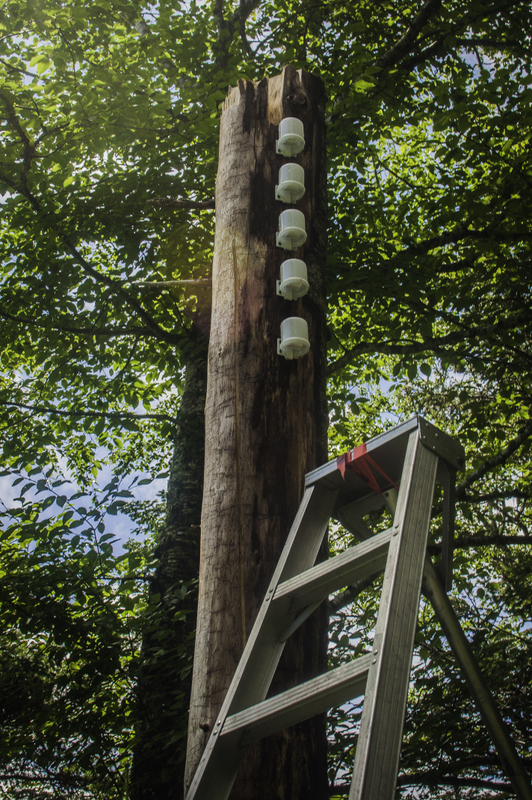Land, sea and sky

Established in 2010, the Newfoundland and Labrador Boreal Ecosystem Latitudinal Transect (NL-BELT) consists of four study regions in Western Newfoundland and Southern Labrador.
Consisting of stream and terrestrial sites that are similar in terms of forest age and type, and soil type, the sites differ significantly in latitude and therefore climate. Measurements of the conditions and state of the southern sites can provide indicators that will help predict how climate change will affect areas further north.
Dr. Sue Ziegler, a professor of earth sciences and the Canada Research Chair in Environmental Science, has been studying these sites along with her colleagues at the Canadian Forest Service, Newfoundland and Labrador Forestry and Agrifoods, and the universities of Kansas and South Carolina. More recently, Banting Post-doctoral Fellow Dr. Trevor VandenBoer, also with the Department of Earth Sciences, has joined the team, enabling a stronger link with atmospheric processes.
The team has been working to understand the complexities of environmental change at the interfaces between the atmospheric, terrestrial and aquatic environments.
“We know from our work that the increased temperature and precipitation along this climate gradient supports increased rates of losses of carbon from the soils in the forests into the atmosphere and aquatic environment,” said Dr. Ziegler. “Yet soil carbon reservoirs appear stable, indicating forest productivity keeps pace with the losses associated with climate warming.”
“It’s only in the last five years or so that people have gotten the fact that the interfaces are major uncertainties,” added Dr. VandenBoer. “The exchanges across those interfaces are critical to understanding the processes that take place in the part of the atmosphere that we live in.”
Dr. Ziegler references the most recent Intergovernmental Panel on Climate Change report, which now recognizes the global significance of carbon export from the terrestrial environment to inland waters.
“People who model terrestrial carbon are realizing they do need to be concerned with that export, because they had always thought of it as a sink, as if that carbon was being stored in the terrestrial environment,” she said. “But there’s a much larger portion that’s being exported to the aquatic environment than previously recognized.
“The fate of that carbon is what aquatic scientists have been studying in isolation, oftentimes, from the terrestrial scientists,” she added. “But there are now more people like us who are straddling the traditional boundaries of environments and investigating what happens at that interface.”
Dr. Ziegler says those interfaces represent critical zones and, as such, the NL-BELT has recently become one of two study sites in Canada to join the international Critical Zone Exploratory Network (CZEN).
CZEN is a community of people and network of field sites investigating physical, chemical and biological processes within the critical zone – defined as the Earth’s outer layer from vegetation canopy to the soil and groundwater that sustains human life. It is spearheaded through the Critical Zone Observatory program of the U.S. National Science Foundation.
This summer three new undergraduate students and a PhD candidate will join the team. The expanding project will also include new infrastructure for increased atmospheric observations – a push that is being funded alongside Dr. VandenBoer’s recent Banting Fellowship, which has been supported by the Government of Newfoundland and Labrador’s Centre for Forestry Science and Innovation.